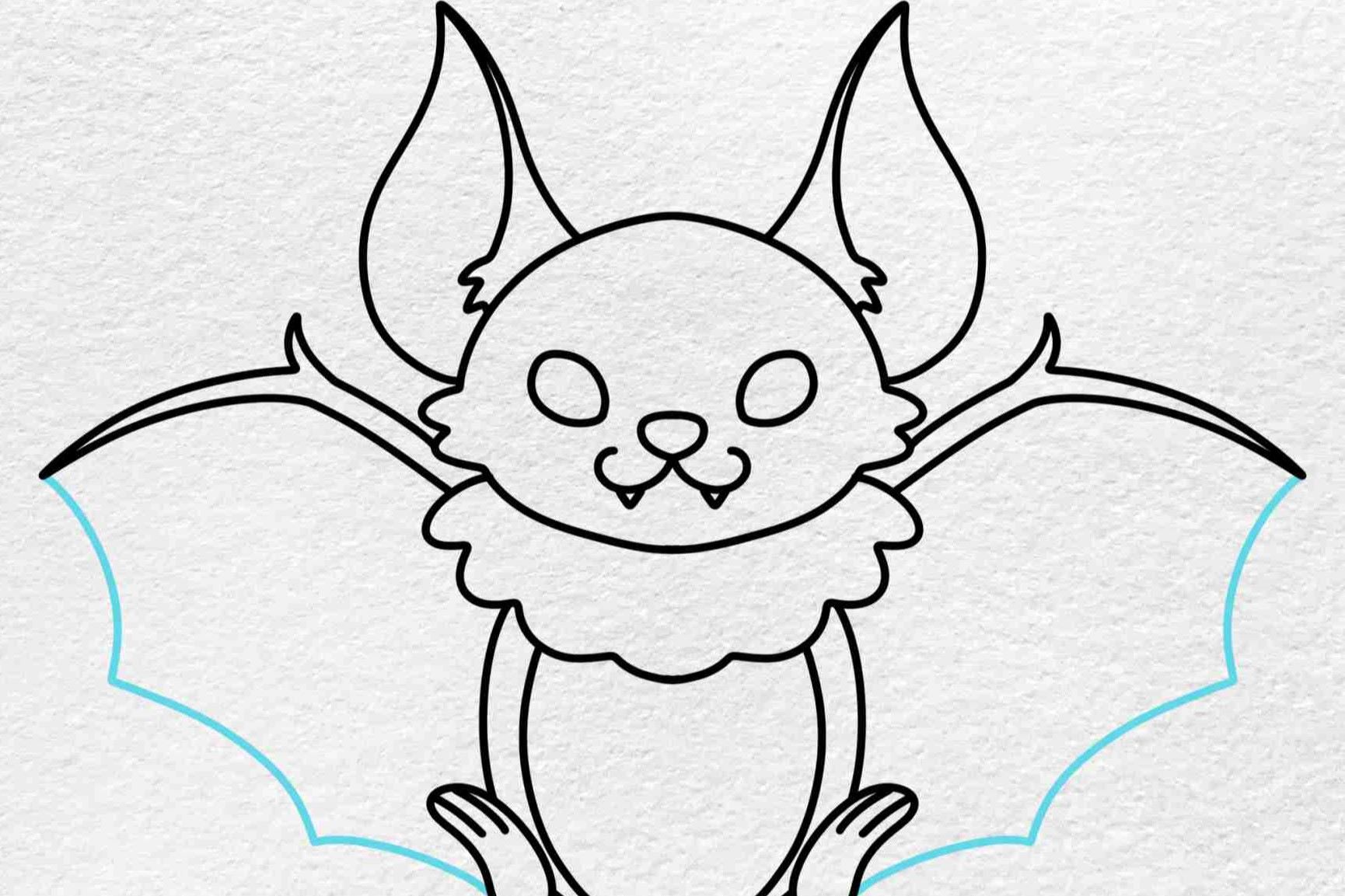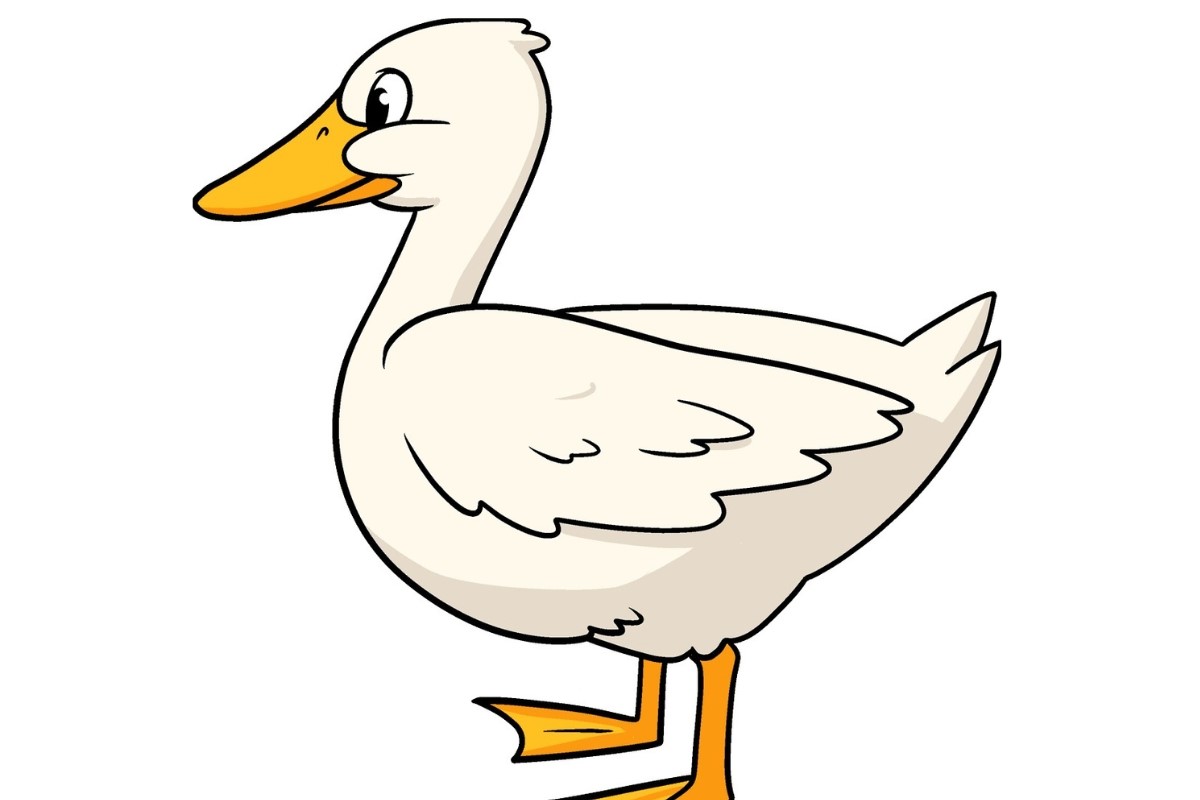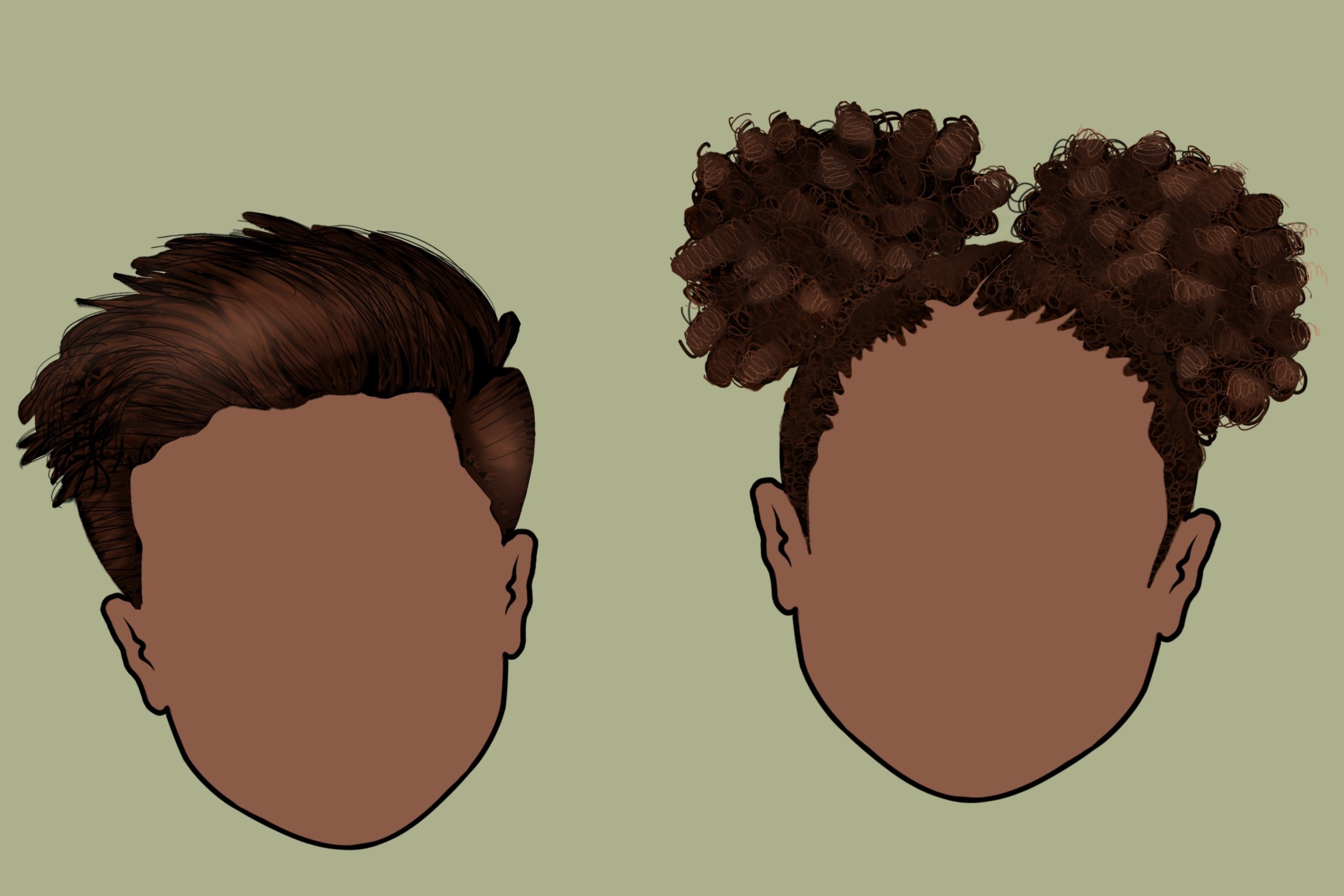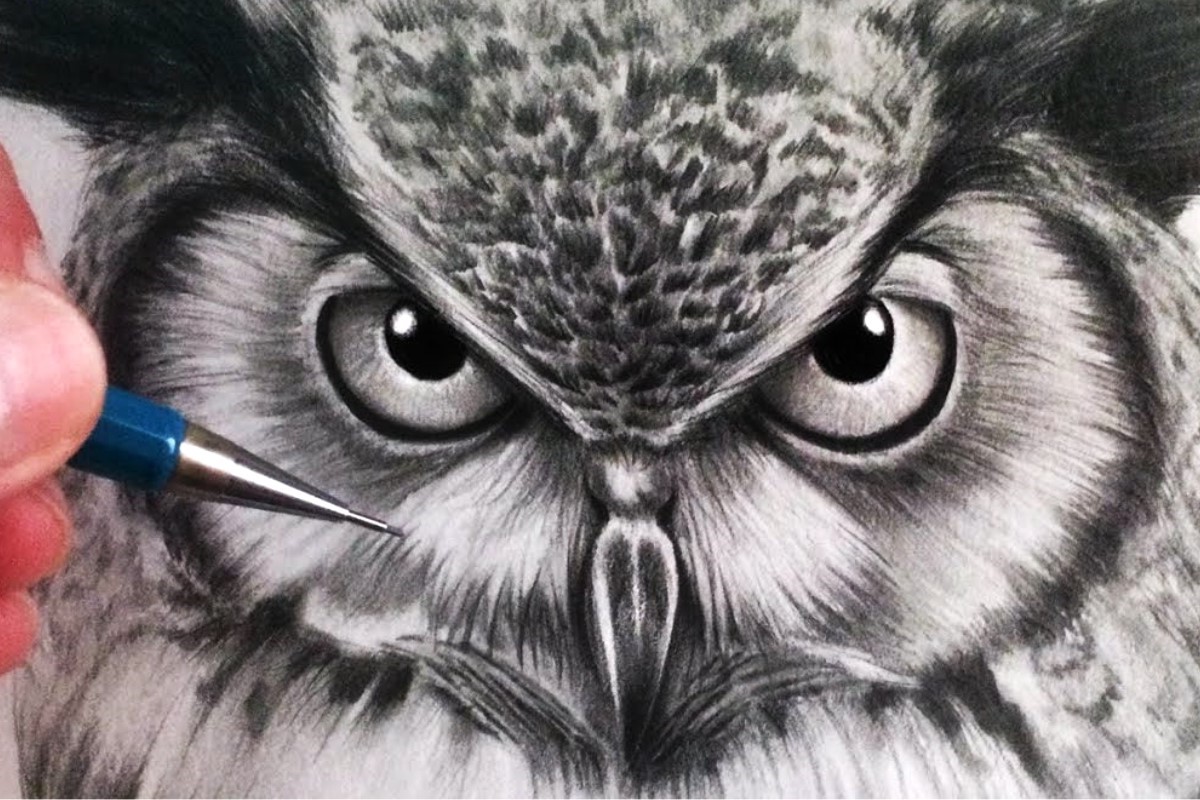Home>Arts and Culture>How To Draw A Bird
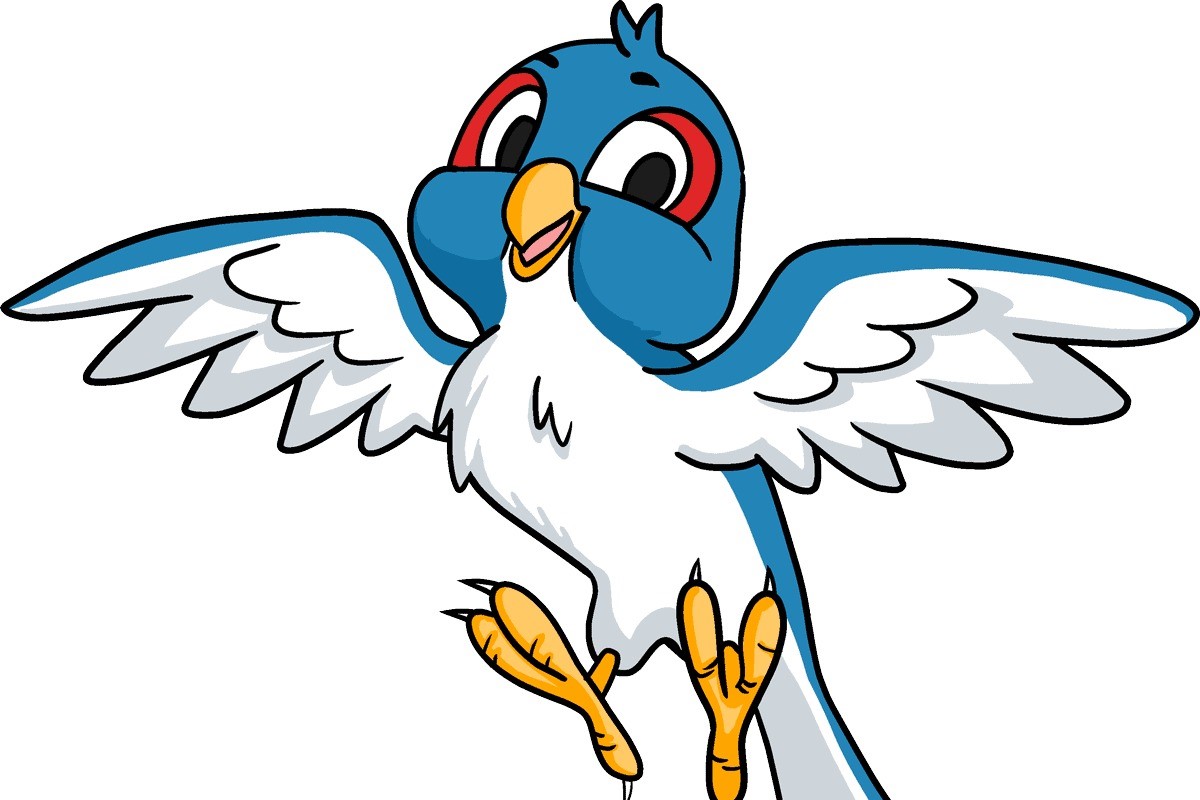

Arts and Culture
How To Draw A Bird
Published: February 29, 2024
Learn how to draw a bird with step-by-step instructions and unleash your creativity in the world of arts and culture. Master the art of bird drawing today!
(Many of the links in this article redirect to a specific reviewed product. Your purchase of these products through affiliate links helps to generate commission for Noodls.com, at no extra cost. Learn more)
Table of Contents
Introduction
Drawing is a wonderful way to express creativity and bring imagination to life. Whether you are an experienced artist or just starting, learning how to draw a bird can be a rewarding and enjoyable experience. Birds are fascinating creatures with diverse shapes, sizes, and colors, making them a popular subject for artists across the world.
In this step-by-step guide, you will discover the joy of capturing the beauty of a bird on paper. From the graceful curve of its body to the intricate details of its feathers, each stroke of the pencil will bring you closer to creating a stunning avian masterpiece.
By following these simple instructions and using your artistic intuition, you will gain the skills and confidence to draw a bird with precision and grace. So, gather your drawing materials and let's embark on this creative journey together. Whether you are sketching for pleasure or honing your artistic abilities, this guide will equip you with the techniques to bring a bird to life on the blank canvas before you.
Materials Needed
Before you begin your artistic endeavor, it's essential to gather the right materials. Here's a list of items you'll need to bring your bird drawing to life:
-
Drawing Paper: Select a smooth, heavyweight paper that can withstand pencil strokes and erasures without tearing or smudging. A standard sketch pad or drawing paper will work well for this project.
-
Pencils: Invest in a set of high-quality drawing pencils with varying lead hardness, such as 2H, HB, 2B, 4B, and 6B. These different grades of pencils will allow you to achieve a range of light and dark tones in your drawing.
-
Eraser: A soft, kneaded eraser is ideal for gently lifting graphite from the paper and making subtle corrections without leaving smudges or marks.
-
Sharpener: Keep a reliable pencil sharpener handy to ensure that your pencils are consistently sharp for precise lines and details.
-
Reference Image: Find a clear reference image of the bird species you wish to draw. This could be a photograph or a detailed illustration that will guide you in capturing the bird's unique features and proportions.
-
Drawing Board: Using a drawing board or a firm surface to support your paper will provide stability and prevent creases or wrinkles in your artwork.
-
Blending Stump: A blending stump or tortillon can be used to soften and blend pencil strokes, creating smooth transitions and textures in your drawing.
-
Optional: Colored Pencils or Watercolors: If you want to add color to your bird drawing, have a set of colored pencils or watercolor paints and brushes ready for the finishing touches.
By having these materials at your disposal, you'll be well-equipped to embark on the artistic journey of drawing a bird with confidence and creativity. Now that you have everything you need, let's move on to the first step of sketching the bird's body.
Step 1: Sketching the Body
To begin drawing a bird, start by lightly sketching the basic shape of its body. Use a well-sharpened HB or 2H pencil to create faint lines, allowing you to make adjustments as needed. Consider the posture and size of the bird you've chosen to draw, as these factors will influence the initial outline.
Begin by drawing a simple oval or circle to represent the bird's body. This foundational shape will serve as a guide for the overall form and proportions of the bird. Next, add a smaller oval or circle above the body to indicate the position of the bird's head. Pay attention to the relative size and placement of these two shapes, ensuring that they convey a natural and balanced appearance.
Once the body and head outlines are in place, lightly sketch a line to represent the bird's spine, extending from the base of the head to the rear of the body. This line will help you visualize the bird's posture and ensure that the body's proportions are accurate.
After establishing the basic body shape and spine, add a simple curved line to outline the bird's belly, connecting the lower portion of the head to the lower part of the body. This line should flow smoothly and define the bird's underbelly with gentle, graceful curves.
As you refine the body's shape, consider the specific characteristics of the bird species you are drawing. Pay attention to the length and curvature of the body, as well as any distinctive features such as a prominent chest or a slender waist. Take your time to observe the reference image closely, allowing it to guide your hand as you capture the unique silhouette of the bird.
Remember, the initial sketching phase is about laying the groundwork for the detailed features that will bring your bird drawing to life. By focusing on the body's basic form and proportions in this step, you'll set the stage for adding the bird's head, beak, wings, and tail with precision and confidence in the following steps.
Step 2: Adding the Head and Beak
With the body outline taking shape, the next step is to focus on adding the intricate details of the bird's head and beak. These features are essential in capturing the unique characteristics and personality of the bird species you are drawing. By paying close attention to the reference image and employing careful observation, you can bring a sense of life and expression to your avian artwork.
Begin by refining the previously sketched circle or oval that represents the bird's head. Use light, fluid strokes to define the contours of the head, considering the curvature and proportions in relation to the body. Take note of any distinctive markings or patterns around the bird's eyes and cheeks, as these details will contribute to the bird's identity and charm.
As you progress, focus on shaping the beak with precision and finesse. The beak's size, curvature, and position play a crucial role in capturing the essence of the bird's species. Whether it's a slender, pointed beak or a robust, curved one, observe the reference image closely to replicate the unique characteristics of the bird's beak.
Pay attention to the beak's placement in relation to the head, ensuring that it aligns harmoniously with the overall structure of the bird. Use light, confident lines to outline the beak's upper and lower sections, emphasizing its defining features while maintaining a sense of balance and proportion.
As you refine the head and beak, consider the bird's expression and personality. Are you drawing a bird known for its sharp, predatory gaze, or one with a gentle and inquisitive demeanor? These subtle nuances can be conveyed through the positioning of the eyes and the curvature of the beak, adding depth and character to your artwork.
By infusing the head and beak with attention to detail and a keen understanding of the bird's unique traits, you will elevate your drawing to a new level of realism and artistry. Remember, each stroke of the pencil is an opportunity to capture the essence of the bird, allowing its individuality to shine through in your finished masterpiece.
Step 3: Drawing the Wings
As you transition to drawing the wings of the bird, you are embarking on a pivotal stage that will define the bird's grace and majesty. The wings are not only essential for the bird's flight but also serve as a captivating visual feature that adds dynamism to your artwork.
Begin by carefully observing the reference image to understand the specific shape and structure of the bird's wings. Note the curvature of the primary feathers and the arrangement of the secondary feathers, as these details will contribute to the authenticity of your drawing. With a well-sharpened pencil, lightly sketch the basic outline of the wings, paying attention to their size and position in relation to the bird's body.
As you progress, focus on capturing the intricate details of the wing feathers. Start by defining the primary feathers that form the wing's leading edge, using confident yet fluid strokes to convey their length and curvature. Consider the overlapping pattern of the feathers and the subtle variations in their shape, ensuring that each stroke contributes to the wing's natural and lifelike appearance.
Moving on to the secondary feathers, delicately outline their placement and orientation, taking care to replicate the gentle sweep of the feathers as they extend from the wing's structure. Pay attention to the spacing and density of the feathers, as these nuances will enhance the sense of depth and dimension in your drawing.
As you refine the wing's details, consider the positioning of the bird's wing in relation to its body. Capture the natural curvature and angle of the wing, ensuring that it harmonizes with the overall posture of the bird. By infusing the wings with a sense of movement and vitality, you will imbue your artwork with a captivating energy that reflects the bird's inherent beauty and freedom.
Throughout this process, remember that patience and attention to detail are key. Take the time to observe the subtle nuances of the wing structure and feathers, allowing your artistic intuition to guide each stroke of the pencil. By approaching this step with precision and care, you will bring the wings to life with a level of realism and artistry that honors the splendor of the avian form.
With the wings taking shape on the paper before you, you are one step closer to completing a stunning portrayal of a bird in flight. As you continue to refine the details and textures of the wings, you will witness your artwork blossoming into a captivating representation of avian beauty, ready to inspire and delight those who behold it.
Read more: How To Adjust A Rain Bird Sprinkler Head
Step 4: Creating the Tail
As you delve into the process of drawing the bird's tail, you are entering a phase that holds significant artistic and aesthetic importance. The tail of a bird not only contributes to its physical balance and aerial maneuverability but also serves as a striking visual feature that adds elegance and character to your artwork.
Begin by closely examining the reference image to discern the unique shape and structure of the bird's tail. Take note of the length, curvature, and feather arrangement, as these details will inform the authenticity and grace of your drawing. With a well-sharpened pencil, delicately sketch the foundational outline of the tail, ensuring that it aligns harmoniously with the bird's body and wings.
As you progress, focus on capturing the intricate details of the tail feathers. Start by defining the central tail feathers, using precise yet fluid strokes to convey their length and tapering shape. Pay attention to the subtle variations in feather size and positioning, as these nuances will contribute to the tail's natural and lifelike appearance.
Moving on to the outer tail feathers, delicately outline their placement and curvature, taking care to replicate the gentle sweep of the feathers as they fan out from the tail's structure. Consider the overlapping pattern of the feathers and the graceful arc they create, ensuring that each stroke contributes to the tail's sense of fluidity and beauty.
As you refine the tail's details, consider the positioning of the bird's tail in relation to its body and wings. Capture the natural flow and balance of the tail, ensuring that it complements the bird's overall posture and movement. By infusing the tail with a sense of poise and elegance, you will imbue your artwork with a captivating visual appeal that honors the bird's inherent grace and charm.
Throughout this process, remember that patience and attention to detail are paramount. Take the time to observe the subtle nuances of the tail feathers, allowing your artistic intuition to guide each stroke of the pencil. By approaching this step with precision and care, you will bring the tail to life with a level of realism and artistry that pays homage to the splendor of the avian form.
With the tail taking shape on the paper before you, you are one step closer to completing a stunning portrayal of a bird in its full splendor. As you continue to refine the details and textures of the tail, you will witness your artwork blossoming into a captivating representation of avian beauty, ready to inspire and delight those who behold it.
Step 5: Adding Details
As you approach the final step of drawing a bird, the focus shifts to adding intricate details that will elevate your artwork to a new level of realism and visual richness. This stage is where the essence of the bird truly comes to life, as you infuse your drawing with the subtle nuances and textures that define the bird's unique beauty and character.
Begin by carefully examining the reference image to identify the specific features that make the bird distinct. Observe the patterns and markings on the bird's plumage, noting the arrangement of feathers and any notable color variations. With a keen eye and a steady hand, use your pencils to delicately render these details, layering strokes to capture the texture and depth of the bird's feathers.
Pay close attention to the bird's eyes, as they are often regarded as windows to its soul. With precision and care, depict the eyes with a sense of clarity and expression, infusing them with a spark of life that draws the viewer into the bird's gaze. Consider the shape and positioning of the eyes, as well as any defining features such as eye rings or distinctive coloration.
As you progress, focus on adding subtle shading and tonal variations to enhance the three-dimensional quality of your drawing. Use a range of pencil grades to create soft transitions and depth, allowing the light to play upon the bird's form and imbue it with a sense of volume and presence. Pay attention to the play of light and shadow, using your pencils to sculpt the contours of the bird's body, wings, and tail with a heightened sense of realism.
Incorporate fine details such as the bird's feet and claws, ensuring that they align harmoniously with the overall composition of your drawing. Capture the delicate structure of the feet and the curvature of the claws, infusing them with a sense of grace and purpose that complements the bird's form.
Finally, consider the environment in which the bird resides. Whether it's perched on a branch, in flight, or amidst its natural habitat, adding subtle elements of the surroundings can enhance the narrative and context of your artwork. Use your artistic intuition to create a setting that complements the bird's presence, adding depth and visual interest to the overall composition.
As you meticulously add these details to your drawing, you are not merely replicating the bird's appearance; you are imbuing your artwork with a sense of reverence and admiration for the natural world. Each stroke of the pencil is an opportunity to celebrate the beauty and wonder of avian life, inviting others to share in the awe-inspiring splendor of the bird you have brought to life on paper.
Conclusion
As you conclude your artistic journey of drawing a bird, take a moment to reflect on the remarkable process you have undertaken. From the initial sketching of the body to the intricate details that breathe life into your artwork, each step has been a testament to your creativity and dedication. As your drawing takes shape on the paper before you, it becomes more than a mere representation of a bird—it becomes a testament to the beauty and wonder of the natural world.
Through the careful observation of a reference image and the skillful application of pencil strokes, you have captured the essence of a bird with grace and precision. Every line and shading has contributed to the creation of a captivating portrayal that honors the unique characteristics and spirit of the avian subject. Whether you have chosen to depict a majestic raptor in flight, a delicate songbird perched on a branch, or a colorful tropical species amidst lush foliage, your drawing stands as a tribute to the diversity and splendor of birds in their natural habitats.
As you add the final touches and details to your artwork, you are not merely creating a visual representation; you are inviting others to share in your admiration for the avian world. The subtle textures of feathers, the expressive gaze of the bird's eyes, and the dynamic posture of its wings and tail all serve as an invitation for viewers to marvel at the beauty and complexity of the natural world.
Your drawing is a testament to the power of art to inspire wonder and appreciation for the creatures that share our planet. It serves as a reminder of the importance of preserving and cherishing the rich diversity of bird species that grace our skies and landscapes. Whether displayed in a gallery, shared with friends and family, or kept as a personal memento of your artistic journey, your bird drawing is a celebration of the beauty that surrounds us.
As you complete your artwork, take pride in the skills you have honed and the beauty you have created. Whether this drawing marks the beginning of your artistic endeavors or stands as a testament to your ongoing passion for drawing, it represents a meaningful achievement—a testament to your ability to capture the essence of the natural world with creativity and skill.
With your bird drawing complete, you have not only created a stunning piece of art but also fostered a deeper connection to the avian wonders that enrich our lives. As you embark on future artistic endeavors, may the experience of drawing a bird continue to inspire and guide your creative pursuits, reminding you of the boundless beauty that awaits your skilled hand and imaginative spirit.









